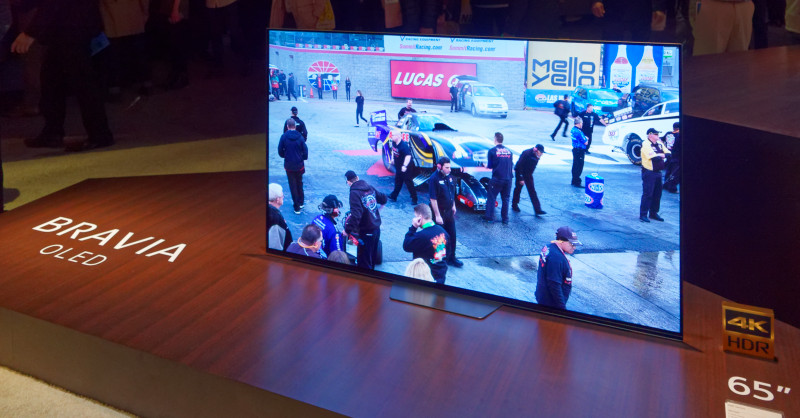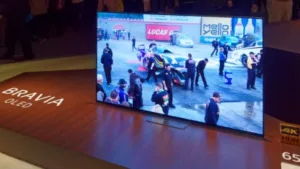The market for premium TVs, which was competitive last year, is looking to hot up in 2018 with Sony announcing much more aggressive prices for 2018 models, LG planning a big boost in supply and Samsung setting ambitious targets for its QLED technology.
Sony announced pricing of $2,800 for its AF8 55″ TV in the US, with the 65″ at $3,800. That contrasts with $5,000 and $6,500 launch prices last year. At the time of writing, Amazon.com was listing the XBR55A8F at $2,798, down from $3,299 and the XBR65A8F at $3,798, down from $4,499. The pricing puts the Sony 55″ set at just 12% above LG’s price and that is bound to put LG under pressure.
Separately, LG Electronics has been reported as planning to boost its OLED TV production to two million units, up from 1.5 million in 2017, while LG Display is reported to be planning to ship 500,000 OLED panels to Sony during the year.
Meanwhile, the Korea Herald has reported that Samsung wants to sell 1.5 million QD LCD TVs in 2018, up from 1 million last year, and 2 million in the 75″ and over TV market this year, as it expects that segment to keep growing. However, overall, Samsung still expects to sell just 41 million to 42 million sets this year, down on previous years. It plans to sell up to 80% of its sets with UltraHD resolution.
Analyst Comment
There have been lots of rumblings about a return to large OLED making for Samsung, after its abortive previous attempt. Analysts have suggested that the fab capacity intended to supply Apple with flexible displays, which is not believed to have been needed by Apple.
We have seen reports an idea of using QD Filters with a blue OLED base (an idea that we proposed last year and was highlighted by IHS Markit at a recent event in Korea) which would eliminate the need to pattern the OLED materials – one of the challenges that Samsung did not overcome last time. We have spoken to LG Displays about this concept, but the company seems religiously disinclined to use QDs because of the association with Samsung. For Samsung, however, this kind of technology could provide a stepping stone to fully QD-based displays (using emissive QDs instead of OLEDs). DSCC has reported that it has seen a sample of an 18″ QD/OLED display, but not a TV-class size.
However, a report from the OLED-A said that after a trip to Kateeva, the inkjet printer maker in which Samsung has shares, and which it uses for OLED encapsulation, Samsung ordered an inkjet printer last year and Kateeva said at SID last year that some potential customers were doing some field qualification. We also reported in June 2017 that BOE had bought a printer.
Meanwhile IHS has heard that Samsung is developing a 75″ genuinely microLED TV for home use that might be produced in the second half of 2018.
As usual, it is mainly the viewers that are going to be the best served by these new developments. (BR)


